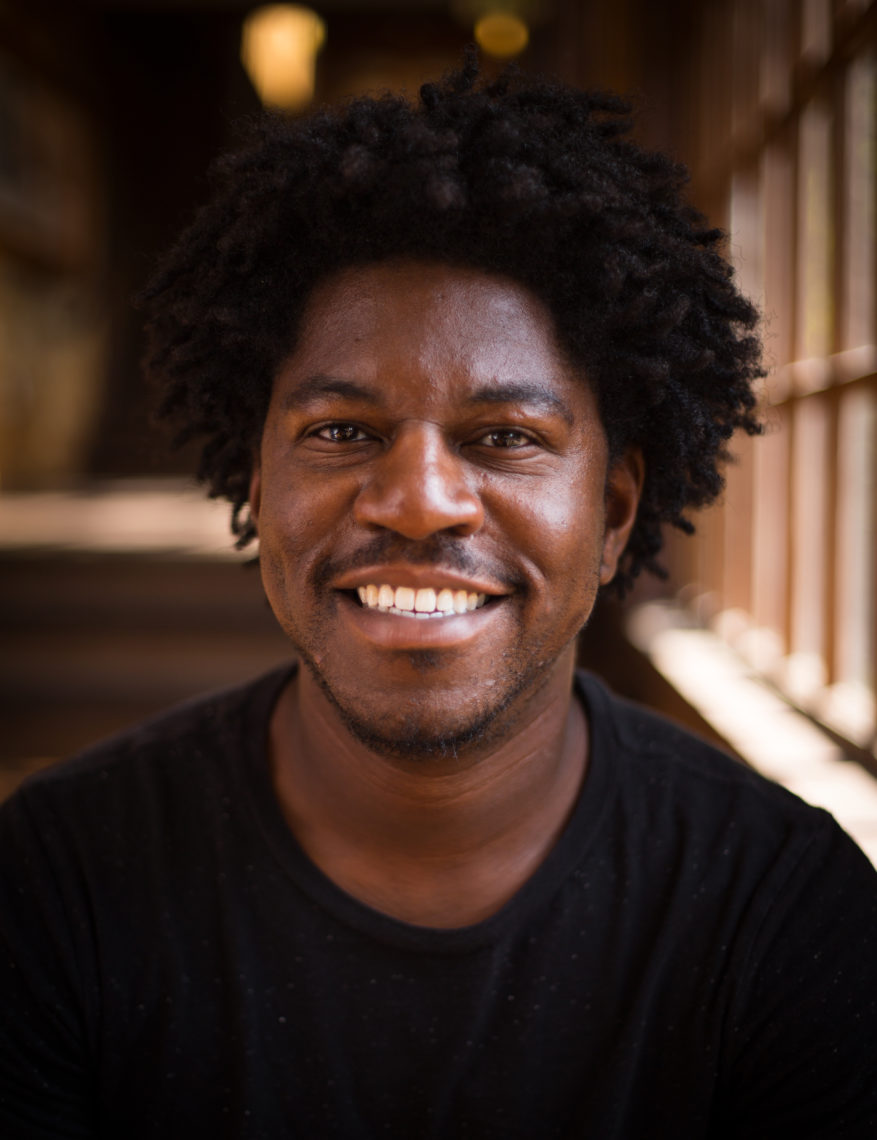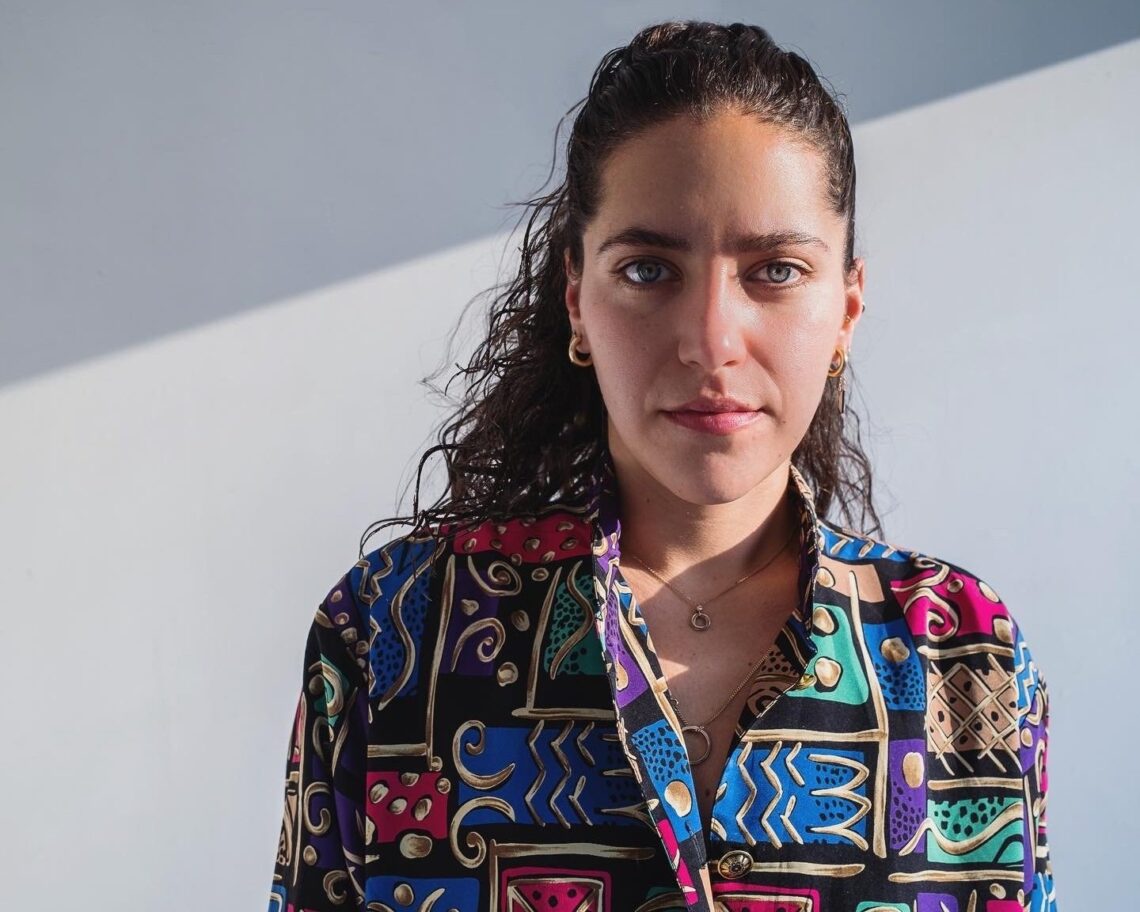
Serginho Roosblad. Photo by Rafael Roy (’18)
For more than a year, filmmaker Serginho Roosblad (’18) of the AP’s Global Investigations team has followed a group of journalists from The Associated Press as they set out to document how many people in the U.S. die after police officers use restraint tactics not meant to kill — as what happened to George Floyd in 2020, sparking a national reckoning over policing.
Roosblad, in his directorial debut “Documenting Police Use of Force,” captures the reporters’ unprecedented findings, drawn from tens of thousands of documents, including autopsies, police incident reports and never-before-published footage from body-worn cameras and bystander cell phones.
Produced in collaboration with the Howard Center for Investigative Journalism and U.S. television’s longest running investigative documentary series FRONTLINE, the film premieres April 30. Marian Carrasquero (’19) is the film’s associate producer.
Berkeley Journalism’s Marlena Telvick interviewed Roosblad via email about the film.
Walk us through how you got involved in the film…
Serginho Roosblad: Soon after the murder of George Floyd, a colleague at the AP received a tip from a long-time source about deaths involving the use of ‘non-lethal’ force by law enforcement. He and another colleague started looking more closely into the matter, and soon realized a somewhat unexplored universe of police deaths, and the failure of the federal government to capture the data of these interactions. Since then they started filing hundreds of FOIAs and tallying the deaths.
I joined the project as much of the reporting had already been on its way for two years, in 2023. I had previously worked on the collaboration between the Associated Press and FRONTLINE on the war in Ukraine, called “War Crimes Watch”. Part of that initiative was a public-facing database about potential war crimes committed during the war. As they were gearing up to collaborate more, the idea came up to create a similar database for the public that resulted in “Lethal Restraint”, and a film about the AP’s efforts to tally deaths involving ‘less-lethal’ force. At the same time, I was selected for the inaugural cohort of FRONTLINE’s Investigative Journalist Equity Initiative. And so when we were looking at various projects the AP was working on I could make a film about, this soon became the lead contender and eventually the film.
Every day, police rely on common tactics that, unlike guns, are meant to stop people without killing them, what police call “less-lethal force.” Do you think the American public will be surprised to learn how often it can still end in death?
Yes, and I was surprised to learn this too. And there were even experts that we spoke with and presented our findings to, who were surprised. I think the types of force that the public will be surprised by are forced sedation and prone restraint. Many people don’t know that in these types of interactions sometimes people are sedated. Oftentimes, people are sedated and wake up in the hospital, but sometimes it goes wrong. The Elijah McClain case is the most well-known recent example, but he was just one of dozens of people who were sedated before they died. McClain didn’t have any drugs on him, but in many cases the AP found, the sedative had a bad interaction with other substances the individual had taken before.
To be included, the cases the AP included had to have primary source documentation, typically records from government agencies. News reports or lawsuit allegations alone were not enough to substantiate a case. How did the rigor in their reporting impact how you framed the film?
Many police departments or others on the side of law enforcement didn’t comment or respond to our requests for comments. So we miss their side of the story. However, having all of the documents we have, we still have a pretty clear picture of what happened in the incidents according to them and what actions they took in the immediate aftermath of the incidents.
The reporting we’ve seen shows that in about 30% of the cases, police were intervening to stop people who were injuring others or who posed a threat of danger. But roughly 25% of those who died were not harming anyone or, at most, were committing low-level infractions or causing minor disturbances. The rest involved other nonviolent situations with people who, police said, were trying to resist arrest or flee. How did you go about visually translating these types of statistics to the audience?
We didn’t intentionally go and select the cases we feature in the film, based on these statistics. We were deep into production when this statistic emerged. But, this shows how often police were dealing with people who were not doing anything necessarily that rose to the level where one could expect to see police use force that would eventually kill. All four cases that we look closer at in the film are men who went through a crisis and needed help. Their actions were minor disturbances at the least, but didn’t rise to the level of criminality. And the tactics the officers used to deal with these men, according to the experts we spoke with, turned out to have contributed to their deaths.
The reporting also shows the known fatalities averaged just two a week for the time period covered— a “tiny fraction” of the total contacts police officers have with the population. And that as the social safety net frays, people under mental distress or who use stimulant drugs like cocaine or methamphetamine are increasingly on the streets and officers sent to handle these emergencies are often poorly trained by their departments. How does this play in the narrative of the film?
Of the four men in our film, two were under the influence of stimulant drugs, which made them act out. Another one was on drugs, but had a medical emergency, a seizure, and two were diagnosed with bipolar disorder. This was not something we intended, but it shows how when even casting a wide net, you still capture many who are on that intersection of drugs and mental illness. Aside from one case in the film, three others were incidents where either themselves or a family member called out for help.
What were the challenges of editing in never-before-published footage from body-worn cameras and bystander cell phones?
When you make a film about force, you have to show the force. But we were very deliberate in what we chose to show. So only the four cases we highlight in the film, we show the body camera footage or footage from the defendant himself (in that case we don’t have body camera footage). In all other cases, when showing examples of force, or patterns that emerged from watching all of the video, we choose to use stills of the body camera video. In addition, we didn’t edit any music underneath any of the body camera footage to not editorialize these interactions.
You brought in Marian Carrasquero (’19) who graduated a year after you as the film’s associate producer. What special skills made her an essential part of your production team?
Marian is just all-around awesome, so that’s her superpower. I’ve always been impressed by her work and that she always remains cool, calm, and collected, so that was major to have her on the team on a project that at times could be very intense. She’s also very organized and with the various moving parts between the AP and FRONTLINE, it was good to have her make sure that the machine kept working without any hiccups.
Dawn Porter is one of the executive producers on the film, and she had worked with Marian as a student when she was leading the documentary film program at the J-School. She was impressed by Marian too and was the one bringing her on board.
Does the data identifying some 1,036 deaths over a decade provide new opportunities to understand patterns in policing? How so?
It does, because I think both the public and law enforcement need to know what kind of force works or doesn’t. Where do these incidents happen and to who? From the database we can glean that many of these incidents involve people with drug problems or are mentally ill. That could support the call for better training or support for law enforcement when dealing with this population.
About Serginho Roosblad
Roosblad is an Emmy Award-winning documentary filmmaker and in FRONTLINE’s inaugural cohort of filmmakers in the Investigative Journalist Equity Initiative (IJEI), an effort aimed at increasing diversity in the documentary filmmaking landscape. At the AP, he has worked on a variety of investigative short documentaries, including on police use of force on children, Retired Lt. General Michael Flynn, and a contaminated former army base, which might have caused cancer in hundreds of veterans.
Prior to his work in documentary film, he spent much of his early career in journalism reporting on Africa, where he covered a wide range of topics such as drug addiction in Uganda, piracy in Somalia, and the musical heritage of Zanzibar. Roosblad is from Amsterdam, the Netherlands, with roots in the (former) Dutch Caribbean. Prior to living in the U.S., he lived in Uganda, South Africa, and Denmark. He was awarded the prestigious Marlon T. Riggs Fellowship in Documentary Filmmaking while at the J-School. He has a Master of Philosophy degree in African studies from the University of Cape Town, where he studied visual trauma culture in post-apartheid South Africa.
About Marian Carrasquero

Marian Carrasquero
Carrasquero is a Venezuelan documentary photographer, producer, and journalist based in Mexico City. Her work is featured in major outlets such as National Geographic, NPR, Bloomberg, Al Jazeera, ProPublica, the BBC, and she is a frequent contributor to The New York Times. She believes that the most powerful work is made at the intersection of art and journalism.
She received her BFA in photography from the Savannah College of Art and Design in 2016.
Film Credits
“Documenting Police Use of Force” is a FRONTLINE production with Trilogy Films and Sony Pictures Television – Nonfiction in association with The Associated Press. The writer, producer and director is Serginho Roosblad. The producer is Mike Shum. The AP journalists are editor Justin Pritchard and reporters Martha Bellisle, Ryan J. Foley, Kristin M. Hall, Aaron Morrison and Mitch Weiss. Ron Nixon is the vice president for news, investigative, enterprise and grants and partnerships. The senior producer is Nina Chaudry. The editor-in-chief and executive producer of FRONTLINE is Raney Aronson-Rath.

